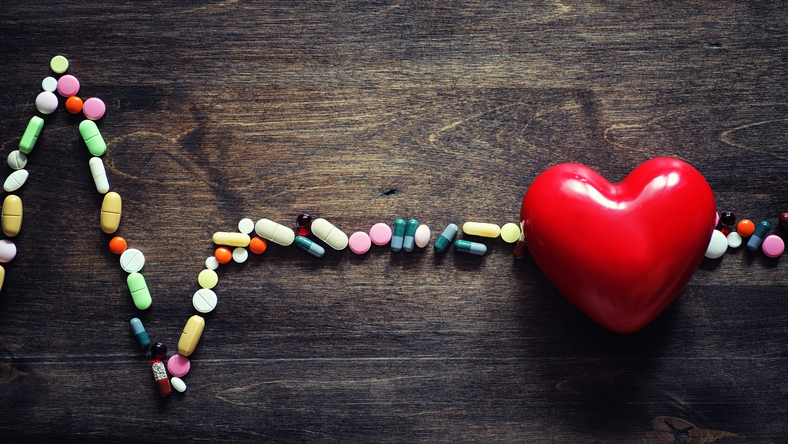Bad cholesterol is the real culprit – medication helps reduce the risk of cardiovascular disease
Cardiology, Cardio-thoracic Surgery

Not too long ago, one of our patients showed her doctor the cholesterol report she received from a medical centre. Her cholesterol levels were lower than her husband’s, she noted, and he had been told his heart was healthy. Did that mean her heart was healthy, too? Hong Kong citizens have grown increasingly health conscious recently, and medical check-ups have become part of everyone’s regular routine. This is good news! However, with so many check-up packages in the market, it can be quite challenging to find the right ones for you – not to mention making sense of the medical data in your results afterwards. Let’s start with total cholesterol, one of the indicators related to heart health. If cholesterol levels exceed standard levels, this is cause for concern. So how should one deal with this ‘culprit’ of heart disease?
Heart disease is now the third biggest killer in Hong Kong, after cancer and pneumonia. Among the different types of heart disease, the number of deaths from coronary heart disease is particularly high, with a growing trend of showing in younger patients.
As one grows older, fatty tissue deposits (referred to as plaque) begin to accumulate on the inner walls of our arteries. Over time, this narrows the lumen of arteries, and causes them to lose their elasticity and harden. This phenomenon is called atherosclerosis.
The heart relies on three coronary arteries to provide oxygen, maintain a normal heart beat, and deliver blood to various organs in the body. Imagine what happens when these blood vessels narrow, and how that affects the blood flow to the heart. When a person exercises or gets emotional, the heart needs to work harder, but with narrowed arteries, the blood flow would be too slow to get enough oxygen. The person would feel a heaviness or tightness in their chest, numbness in their left hand, experience cold sweats, dizziness, and difficulty breathing. If the obstruction of arteries were acute, and not treated in time, the heart muscle would go necrotic due to hypoxia (lack of oxygen), threatening that person’s life.
This is why people need to be vigilant about the health of their blood vessels, and the first step is understanding cholesterol levels. A general cholesterol test analyses cholesterol levels through a blood test, measuring blood lipids. We all know that high cholesterol can affect our health, but some medical reports only list the total cholesterol levels, while others are divided into three parts: high-density lipoproteins (HDL), low-density lipoproteins (LDL), and triglycerides.
Many people immediately associate high cholesterol with an increased risk of cardiovascular diseases or stroke. More specifically, though, this happens when low-density lipoproteins (“bad cholesterol”) exceeds the standard level. When bad cholesterol accumulates in blood vessels, it can cause them to deteriorate, harden, and even blockage.
A medical report that only lists your total cholesterol level does not indicate the severity of this bad cholesterol, so it isn’t as much help as it might seem at first. However, a more detailed medical report showing that your low-density lipoproteins levels exceed the normal level of 3.4 mmol/L should be taken very seriously.
Should everyone aim for 3.4 mmol/L? No – for high-risk individuals, the target should be even lower. This includes people who have cardiovascular disease, peripheral vascular problems, diabetes, or who have previously had a stroke. Their ideal bad cholesterol index should be less than 1.8 mmol/L, much stricter than what’s asked of the average person. Recently published 2019 ESC guideline even recommend LDL <1.4mmol/L for very high risk individuals. However, many patients are unaware of this, and think that their low-density lipoprotein level is fine and needs no monitoring and treatment, which increases their risk of cardiovascular disease, coronary heart disease and stroke recurrence.
So, how should patients lower their cholesterol? Many assume it’s all about diet, but only 15% to 20% of low-density lipoproteins in the blood are directly ingested from food. The real culprit is trans fats. Foods such as French fries and cookies cause the liver to produce more bad cholesterol, reduce good cholesterol, and increase the risk of cardiovascular disease and stroke.
If bringing your diet under control doesn’t reduce your bad cholesterol levels enough, or you have cardiovascular disease or a family history of hypercholesterolemia, you will have to take cholesterol-lowering drugs as well.
Many patients resist taking medication, but high-cholesterol is an invisible killer. Cholesterol-lowering drugs are important to help protect your cardiovascular system and reduce the risk of cardiovascular disease.
Statins are currently the most common drugs used to control cholesterol. These suppress the production of cholesterol in the liver and reduce bad cholesterol by 30% to 50%. Statins are effective, but they have certain limitations. Some patients may have side effects such as liver enzyme abnormalities, muscle soreness, and inflammation when using medium to high doses. In the past, there was little choice but to deal with these side effects. Now, however, you can choose a new cholesterol-lowering injection instead.
While statins are most commonly used in lowering LDL-C, a recently published study revealed that only half of the people prescribed statins failed to reach their cholesterol goals. But now saw the breakthrough release of the injectable treatment. Injections are given once every two weeks, and the side effects are milder than other drugs. Studies have shown that it is also more effective than oral drugs and can reduce bad cholesterol by 60%. Like oral medicine, patients need to keep up with the injections, or their cholesterol levels will rebound.
Medications have improved, but patients must also work on improving themselves by adjusting their lifestyle habits. This includes eating more vegetables and less meat, doing more exercise, quitting smoking and alcohol, maintaining a healthy work-life balance, and staying upbeat. These are all important in reducing the risk of cardiovascular disease.





